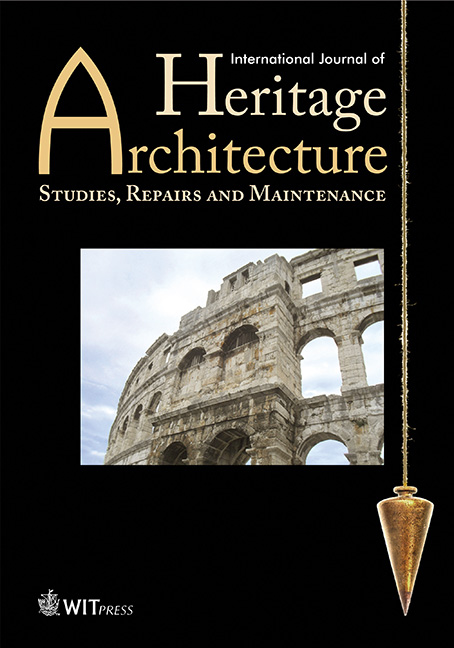A CASE STUDY: RESTORATION OF HISTORICAL MUSEUM IN SARAJEVO (1963) – A MODERNIST RUIN
Price
Free (open access)
Volume
Volume 2 (2018), Issue 1
Pages
10
Page Range
138 - 148
Paper DOI
10.2495/HA-V2-N1-138-148
Copyright
WIT Press
Author(s)
AMIR CAUŠEVIC´, AIDA IDRIZBEGOVIC´-ZGONIC´, NERMAN RUSTEMPAŠIC´ & LEJLA KAHROVICHANDŽIC´
Abstract
The Historical Museum, originally built as the Museum of Revolution in 1963, is an abstract modernist building; a stone-clad lapidary volume placed upon a transparent ground floor creates a strikingly simple and dramatic geometric and material contrast in the best manner of minimalism. The architects influenced by ‘less is more’ created an audacious building in architectural, material and structural scheme. In structural design and building physics less is, in most cases, simply less, and structural and surface/material deterioration is very visible on the building. This also affects the functionality of the entire building that needs to consume enormous amounts of energy (for cooling and heating), threatening an ever fragile budget of the institution of the museum. Due to its architectural values and cultural significance, the building is protected by law, as a national monument. Interventions must be performed to not only improve the conditions of the building but also maintain its original character and authenticity. A project for restoration of this building is emerging and proving to be even more challenging than initial estimates, especially for the structural aspects of the building that are far from current and needed dimensioning or fire protection codes, which is the case of many buildings from this era. The article will outline the proposals (part of the work is in implementation) and approach for restoration of several elements: structure, insulation, roof light, stone cladding and transparent façades. One of the most prominent features of the structure is the skeletal structure based on slender steel, +-shaped columns and hidden concrete grid beam system locked within thin slabs. This presents a challenging task for us – structural engineers and architects – to work in the domain of the hidden, the invisible in order to maintain the building’s original ethereal appearance.
Keywords
Historical Museum, modern heritage, skeletal structure, modernist ruin, national monument, roof restauration, static assessment, structural design




